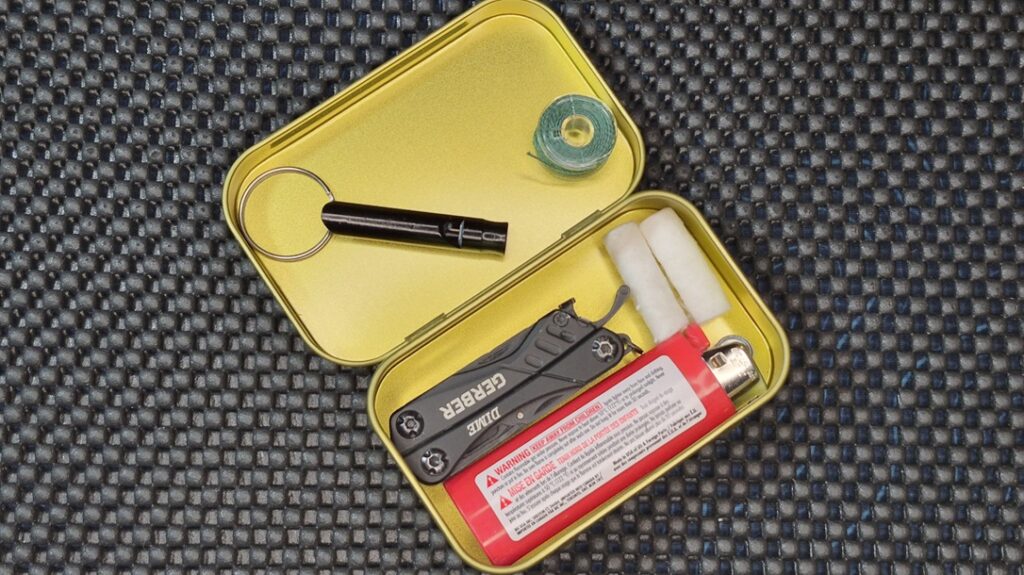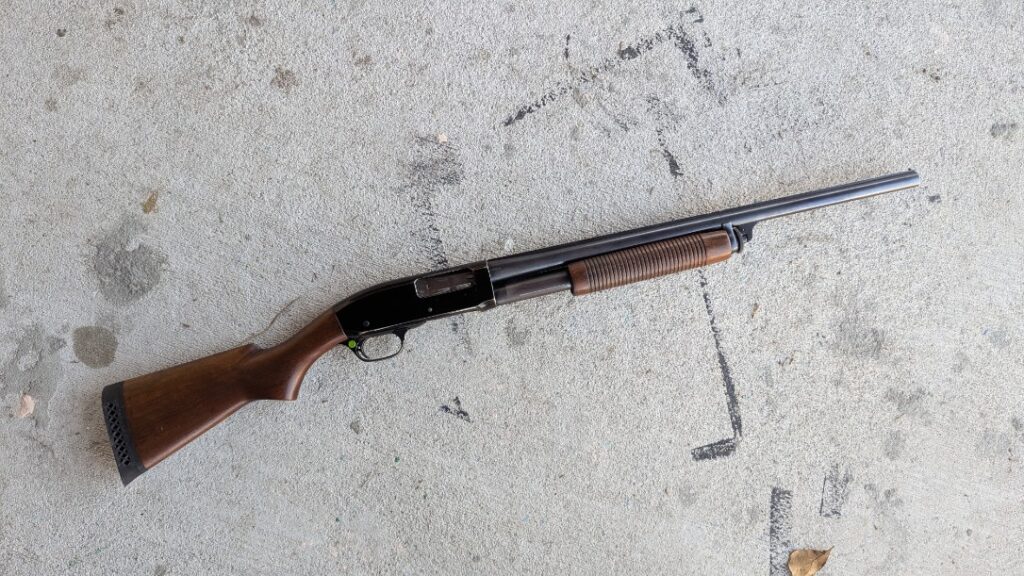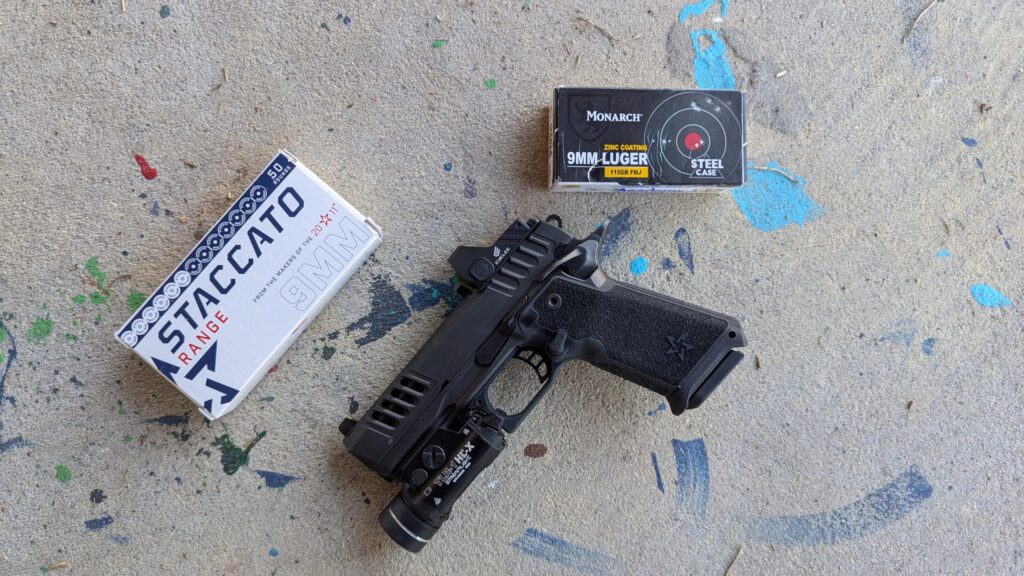One of Leupold’s most classic reticles across its tactical riflescope lines has always been the Tactical Milling Reticle (TMR). It was originally implemented approximately two decades ago as an improvement over more archaic “mil-dot” reticles. These earlier “mil-dot” style reticles used round spheres or oval-shaped footballs that subtended in one mil increments. However, the TMR did away with those since the round or oval markings tended to be less precise and, due to their size and shape, obscured targets.
Instead, the TMR did away with those orbs and introduced a series of flat, straight hashes arranged in more precise patterns across both the horizontal and vertical stadia lines. These hash marks decluttered the middle of the sight picture and ultimately made it easier for any shooter to take advantage of the reticle’s milliradian-based system. By today’s standards, the TMR looks quite ordinary, but at the time of its design, it was one of the most cutting-edge reticles.
At first I wasn’t enthused by it, but the more I shoot with this reticle, the more I appreciate it. My appreciation for the TMR most definitely increased after realizing it was the reticle that succeeded the old-school mil-dots. As such, I stopped taking it for granted because even today, the TMR still possesses some strong points.
Advertisement — Continue Reading Below
It’s also interesting to note that this reticle is a veteran of the GWOT and was prominently used in many of Leupold’s Mark 4 military scope models, especially those mounted on original 5.56mm NATO Mk. 12 SPR and 7.62mm NATO M110 SASS semi-automatic rifles. Such rifles were paired with TMR-based Leupold Mark 4 LR/T 2.5-8×36 and Mark 4 LR/T 3.5-10×40 models.

The Leupold Tactical Milling Reticle At A Glance
The Tactical Milling Reticle is the spiritual successor to the Leupold mil-dot reticles that saw military use in the United States through the mid-2010s. This reticle retains many of the former’s functionality but executes it in a cleaner, streamlined, and more precise manner.
Advertisement — Continue Reading Below
Obstructing mil-dots along stadia lines are replaced with flat hash marks that don’t clog the sight picture visually. Otherwise, the reticle still maintains a fairly standard square crosshair configuration consisting of two main stadia lines, one vertical and the other horizontal. Both stadia lines have three different levels of thickness that taper in segments from coarse, medium and fine.
When a TMR-equipped scope is fully magnified, the overview of the reticle looks like it resembles a duplex with its coarse to thinner line transitions. The most useful hash marks begin subtending in 0.5 mil increments through the finest portion of either stadia line.
The central aiming reticle is voided negative space so as not to obstruct targets at longer distances. The medium and coarser spans of stadia lines are divided into sections of 2.5 mils, 5 mils, and 10 mils to aid with ranging and general-purpose measurements. These can be especially useful when paired with a first focal plane riflescope.
Advertisement — Continue Reading Below

The TMR According to Leupold
Leupold’s TMR uses a mil dot style framework that incorporates a milliradian based subtension scale for ranging known targets. In addition, the intersection of the crosshair is left open, creating a small, clear aperture for increased precision at longer ranges. Recent findings have determined that existing reticle designs obscure the target at longer distances. The TMR reticle eliminates that problem.
–Leupold HANDbook
Advertisement — Continue Reading Below
Ranging Targets With The TMR
In addition to aiding with precise shots, a big function in the TMR’s design is to give rifle shooters the ability to use the milliradian-based (MRAD) calibrated markings to determine the distance in yards or meters of any target of a known size. It’s called ranging, and it’s an old-school analog method of determining the distance of shots. It is straightforward and involves a tiny bit of math.
The math is very easy. It’s merely calculator math that anyone can do. Nowadays, sophisticated shooters have access to all manner of laser rangefinders and other gear. So, maybe using the reticle itself to “mill” targets comes off more like a party trick than a practical measuring technique. But it’s still useful to remember.
Ranging is done by lining up an object in between the reticle’s hash marks and counting how many hash marks it takes up. Then, multiply the object’s height in yards/meters by 1000. That product is then divided by the number of “mils tall” the object measured in the reticle and the quotient is the distance. Then, one would dial or hold over accordingly.
Advertisement — Continue Reading Below
For example, a sniper on overwatch is concealed in some rocky hills, looking down at a landing strip and hangars below, where drug dealers are expected to show up for an exchange. The sniper doesn’t know the distance from his position to this landing strip, but there happens to be a 53-foot semi-truck trailer on the tarmac.
Our sniper knows that a standard truck trailer is 13.5 feet tall, which is 4.5 yards. He brackets the height of the trailer using his TMR and determines it is 3.5 mils tall. He can multiply (4.5 yards x 1000) ÷ 3.5 mils and get the distance to the tarmac, which is 1,286 yards from his position.
Ranging Full-Size IPSC Targets
Here’s a more mundane example that doesn’t sound like an episode of the Terminal List. A shooter is shooting at full-size IPSC targets (76.2 cm tall) on an unknown distance rifle course. After bracketing one of these targets and determining it’s 1.5 mils tall, she uses the same formula (0.762 meters x 1000) ÷ 1.5 mils and determines this target sits 508 meters away.
Advertisement — Continue Reading Below
According to her rifle’s ballistic chart, to hit that target, she’d either need to dial 3.67 mils into the elevation turret or count the vertical hashes on the TMR to hold over 3.67 mils.
The downside of ranging targets in this manner is that the formula only works with an accurate guess of the target or object’s height. Without that measurement or something close to it, the number for the distance would be extremely unreliable. More importantly, without having any ballistics data for a rifle and its load, the ranging information from milling with the TMR isn’t as useful.
Advertisement — Continue Reading Below
Image Credits for every graphic and picture used in this article belong to Leupold.















